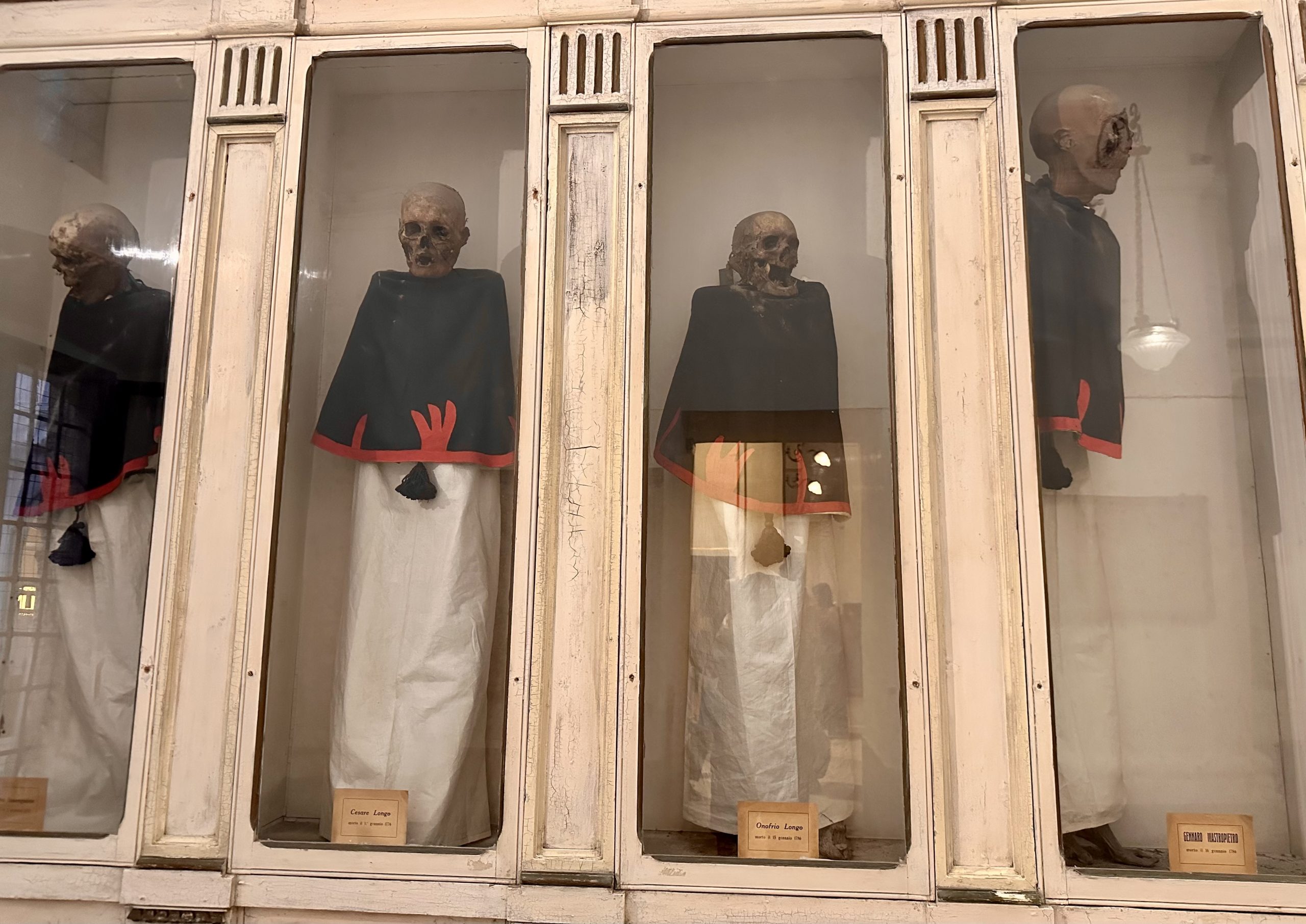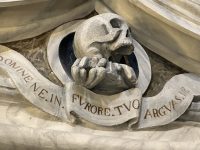Why would I want to learn more about macabre Purgatory Churches?
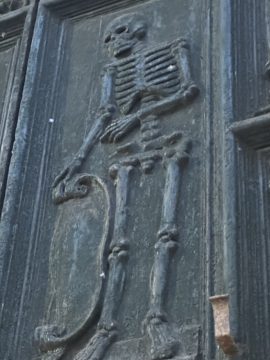
Purgatory Churches can be surprising and maybe even a little creepy, but they are also fascinating. Visiting one of these churches can help us understand about hope, grief, anxieties, and beliefs about salvation, sin, and the fate of the soul. You experience artistic and architectural expressions of mortality.
Purgatory Churches are also a window into the evolving beliefs of death and the afterlife.
The idea of Purgatory has early roots and becomes more official in 1274
The concept of purgatory as a place of purification gradually developed during the medieval period. The Second Council of Lyons (1274) officially recognized purgatory and affirmed that the prayers of the living could help souls that are not cleansed and ready for Heaven.
Dante

Dante Aligheri’s Purgatorio profoundly shaped ideas of Purgatory. Prior to Dante, the concept lacked detail. Dante however, provided a vivid, structured and relatable version of a mountain with 7 terraces that each corresponded to the seven deadly sins. Dante’s Purgatory wasn’t just a place of punishment, but he emphasized the moral and psychological transformation of souls with an emphasis on hope and divine mercy.
Purgatory Churches are built
Over time, churches and chapels were built to commemorate the doctrine of purgatory and to serve as spaces for prayer for the dead. Following the Protestant Reformation’s rejection of Purgatory, the Catholic Church countered with strong re-emphasis on Purgatory’s existence and the importance of prayers for the deceased. Southern Italy and Sicily became fertile ground for the re-assertion. Confraternities and Associations actively promoted the building and use of purgatory churches .
At the same time, the Baroque movement created a unique environment for the proliferation of visually rich and often macabre imagery that stylized these churches. Decoration often depicted scenes of death, judgement, and the cleansing of souls
What you may find in Purgatory Churches
Elaborate front doors that emphasize you may be a King, a Pope, or a laborer- but we are all identical in death. Examples below are from Monopoli, and Matera, Italy
Purgatory Doors
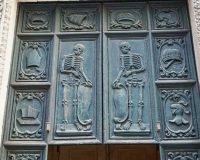
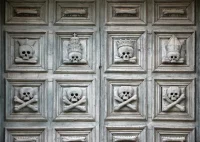
Paintings of Souls being lifted from Purgatory
You are likely to find a central Painting of people being lifted from the flames of Purgatory. These examples are behind the alters of Purgatory Churches in Galatina, Matera, and Monopoli, Italy.
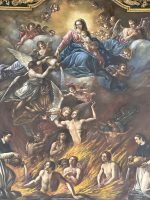
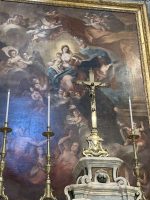
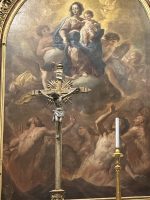
Skulls and skeletons in the Baroque decoration the inside and outside of the church

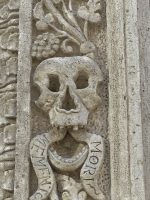
The Virgin Mary is prominently featured
In the Catholic tradition, Mary is featured in relation to Purgatory and the prayers for the souls. Mary is the Mother of all the Church’s members including those in Purgatory- the Church suffering.
The Church recognizes the Saints in Heaven, those living on Earth, ad the souls waiting for purification. Mary is a powerful intercessor with her unique role in salvation as the Mother of Christ. Many devotional writings also refer to Mary bringing refreshment and comfort to souls that are suffering.
In the Chiesa di Santa Maria del Suffragio detta del Purgatorio in Monopoli, Italy, Mary is featured with a knife in her heart- symbolizing the pain she feels over the death of her Son, the Lord Jesus Christ.
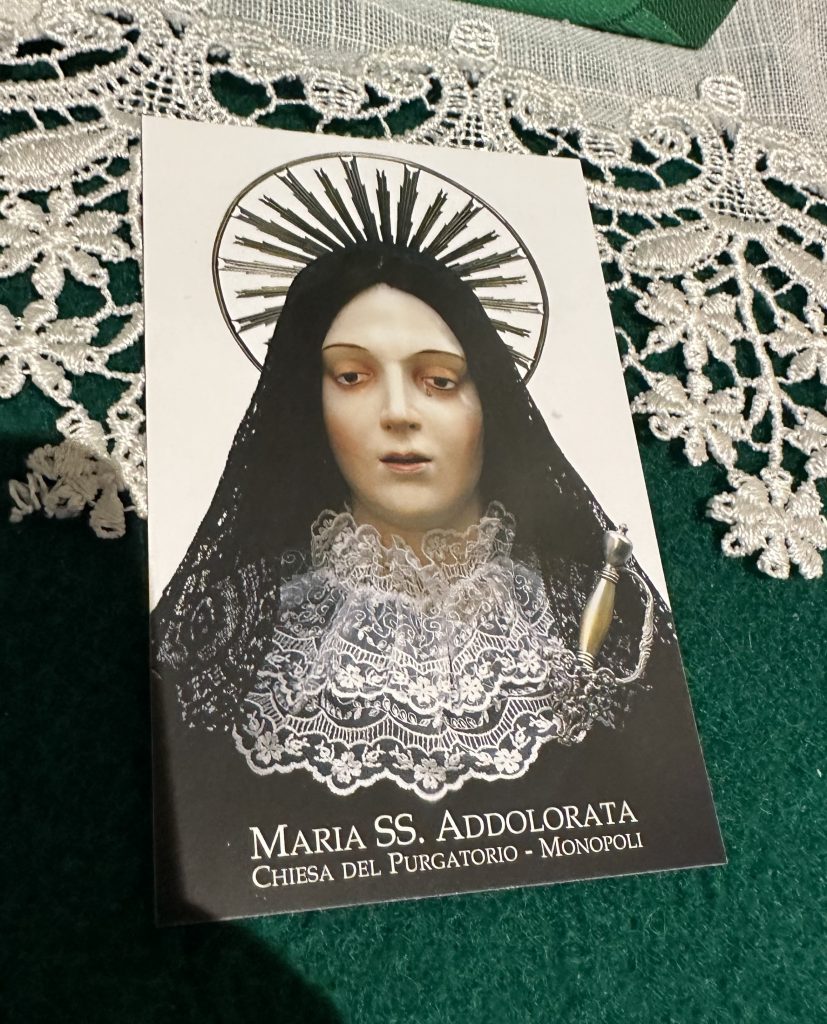
Mummies
In Monopoli, the Confraternity of Santa Maria del Suffragio wanted to emphasize representations of Death and Purgatory through the mummified remains of Confraternity members and Administrators who were embalmed and preserved in accordance with the practices in the 18th and 19th centuries. Their black robes feature the fiery red flames of Purgatory. All of the mummies serve as a visual reminder of death and the afterlife – encouraging devotion and prayer.
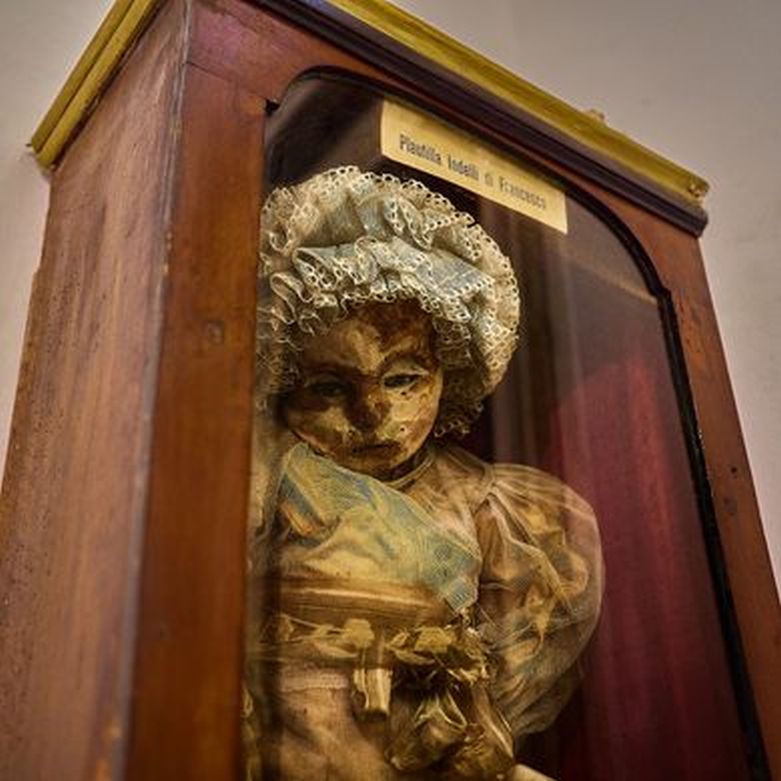
Do Catholics still believe in Purgatory?
Yes. Purgatory remains a core belief within the Church, and the Church continues to teach that purgatory is a state of purification for those who die in God’s grace but are not yet perfectly cleansed for heaven.
While the core belief in purgatory has remained, interpretations have evolved. Some theologians, including Pope John Paul II, according to National Catholic Reporter, have emphasized purgatory as a process of purification rather than a specific place
Where do I find Purgatory Churches?
Purgatory Churches can be difficult to find and they can have limited hours- but always wonderful to discover. Here are a few:
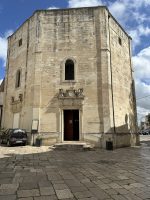 Church of the Holy Souls of Purgatory (Madonna delle Grazie) via giuseppe Lillo Galatina, Italy Dedicated to the Anime Sante of Purgatory, and completed in 1708 this octagonal plain exterior, hides rich artistry and history on the interior.
Church of the Holy Souls of Purgatory (Madonna delle Grazie) via giuseppe Lillo Galatina, Italy Dedicated to the Anime Sante of Purgatory, and completed in 1708 this octagonal plain exterior, hides rich artistry and history on the interior.
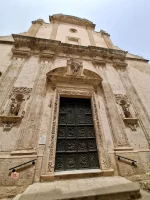
Chiesa di Santa Maria del Suffragio detta del Purgatorio Via Argento, 470043, 70043 Monopoli BA, Italy The Confraternity of the Intercession for the Souls of Purgatory had formed and set up offices in the Cathedral. On September 20, 1686, the Cathedral’s bell tower collapsed killing 40 people. The confraternity bought the land and built a church in memory of those who perished. Construction was started in 1687 and completed in 1700. This church may be best known for macabre symbols of death and mummies.
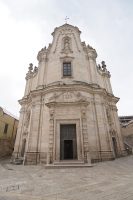 Chiesa del Purgatorio Via Domenico Ridola, 75100 Matera MT, Italy The church of Purgatory was built between 1726 and 1747 by a Confraternity of shepherds called the “Souls of Purgatory”, whose work was so admired, they were able to raise the funds to build a church in the renovated Rococo style. The upper part of the facade shows angels, fruit baskets, and penitents wrapped in flames. The wooden door is divided into 36 squares decorated with the skulls of nobles and clergymen and common trades people-emphasizing that men are in different hierarchal roles in life but identical in death.
Chiesa del Purgatorio Via Domenico Ridola, 75100 Matera MT, Italy The church of Purgatory was built between 1726 and 1747 by a Confraternity of shepherds called the “Souls of Purgatory”, whose work was so admired, they were able to raise the funds to build a church in the renovated Rococo style. The upper part of the facade shows angels, fruit baskets, and penitents wrapped in flames. The wooden door is divided into 36 squares decorated with the skulls of nobles and clergymen and common trades people-emphasizing that men are in different hierarchal roles in life but identical in death.
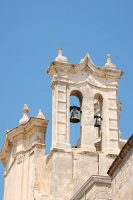 Chiesa del Purgorio(Capella San Martino)- Polignano a Mare Via Mulini, 4, Polignano a Mare, Metropolitan City of Bari, 70044, IT It is a small single nave Church with Baroque-style layout and decoration. The majolica floor dates back to the 18th century. The painting behind the high altar by Andrea Miglionico depicts St Michael among the souls in purgatory.
Chiesa del Purgorio(Capella San Martino)- Polignano a Mare Via Mulini, 4, Polignano a Mare, Metropolitan City of Bari, 70044, IT It is a small single nave Church with Baroque-style layout and decoration. The majolica floor dates back to the 18th century. The painting behind the high altar by Andrea Miglionico depicts St Michael among the souls in purgatory.
The façade is concave-convex, divided into two orders, with a portal including skulls, bones and hourglasses.
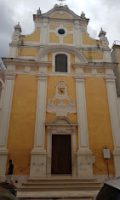 Church of Purgatory (Chiesa Rettoria delle Anime Purganti)- Fasano Corso Vittorio Emanuele, 16, 72015 Fasano BR, Italy The church of Purgatory, also known as the Souls in Purgatory, is a late Baroque church, with a single nave and barrel vaults, erected in 1696. With typical Baroque style and artistry you will notice Purgatory stonework, paintings and frescos. You will also notice Mary with a Knife in her heart symbolizing her suffering over the death of he beloved son.
Church of Purgatory (Chiesa Rettoria delle Anime Purganti)- Fasano Corso Vittorio Emanuele, 16, 72015 Fasano BR, Italy The church of Purgatory, also known as the Souls in Purgatory, is a late Baroque church, with a single nave and barrel vaults, erected in 1696. With typical Baroque style and artistry you will notice Purgatory stonework, paintings and frescos. You will also notice Mary with a Knife in her heart symbolizing her suffering over the death of he beloved son.
Other Religious sites to see
Interested in more of the most magnificent churches in Puglia?

Check out Monuments of Faith-Puglia’s spectacular churches

